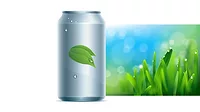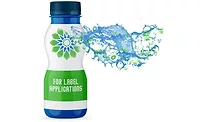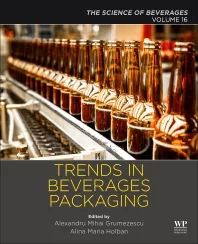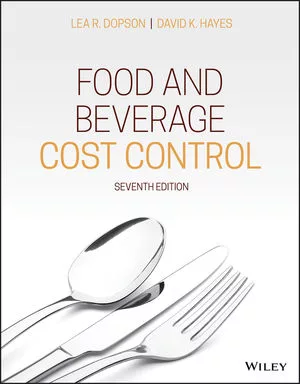Product safety, sustainability trends drive global demand for glass packaging
Glass delivers experience to consumers, experts note

Image by Ryan McVay/DigitalVision via Getty Images
With sustainability top of mind for many industries across the globe, a recent report from Straits Research notes that glass has become a widely preferred packaging material in the food and beverage industry due to its neutral-reacting and recyclable properties.
According to the report, the global glass packaging market size was valued at $71.50 billion in 2024 and is projected to reach from $74.64 billion in 2025 to $105.25 billion by 2033, growing at a CAGR of 4.39% during the forecast period (2025-2033).
The report further notes that although the glass packaging market is bifurcated into food, beverage, personal care, healthcare, household care, and other end-users, the beverage segment dominates the market and is expected to exhibit a CAGR of 3.98% over the forecast period.
As far as regional analysis, according to Straits Research, Asia-Pacific is the most significant global glass packaging market shareholder and is projected to exhibit a CAGR of 5.27% during the forecast period.
“The Asia-Pacific beer packaging industry is primarily driven by shifting cultural trends, expanding populations, urbanization, and the rising popularity of beer among younger generations,” the report states. “It is anticipated that changing trends will continue due to various investments and the expansion of beer distribution in various regions, thereby stimulating the market for glass bottles and containers.”
Meanwhile, Europe is estimated to exhibit a CAGR of 3.23% over the forecast period, according to the report.
“Due to its capability to remain inert to its contents and safe for consumers, the European food and beverage industry has widely adopted this packaging,” it states. “Europe is anticipated to have the quickest-growing demand for glass containers, with the beer industry accounting for more than half of the region's demand.”
Tim Connors, general manager of Americas North at O-I Glass Inc., Perrysburg, Ohio, says that in the Americas, strong demand for glass packaging is driven by increased consumer preference for sustainable packaging solutions.
“A recent Glass Packaging Consumer Study found that 92% of U.S. consumers regard glass packaging positively because of its lower environmental impact,” he explains. “Glass is pure, natural, and infinitely recyclable, which is why it has been used for many decades to protect, preserve, and deliver food, beverages, and other products that enrich and sustain our way of life.”
As far as efforts being made by players in the glass market that support recyclability, Connors says that glass is at its best when it is produced, consumed, and recycled locally.
“To leverage this inherent benefit, O-I is working to make glass recycling available in 100% of the communities in which our plants operate. To date, we have achieved this mark in about 96% of our shared communities,” he shares. “As a company, we promote glass and recycling in partnership with our customers, partners, and across our value chain to build the relationships to maximize the circularity of glass. This local, grassroots approach to advancing glass recycling enables us to play to the strengths, sustainability challenges, and values of the local markets.”
Beyond sustainability, other beverage trends are influencing the use of glass packaging.
“Glass is more than a package. It is an experience,” Connors says. “Glass packaging is transparent and showcases the products it protects. Packaging in glass is a communication from brands that they are not cutting corners and that consumers can expect the best experience when consuming their products.
“The experience of drinking a carbonated beverage from a glass bottle is an elevated experience — from the tactile sensation of picking up the package, to the way the geometry of the package delivers the product, to the artistry of the container — and consumers have an emotional connection to these experiences,” he continues.
Moreover, glass packaging is not only sustainable, Connors says, but also preserves the taste and quality of beverages, making it a preferred choice for brands looking to differentiate themselves.
“Glass is nonporous and impermeable, meaning packaged food and beverage products do not interact with their glass containers,” he explains. “As a result, food and beverage flavors are unaffected and unaltered. Glass also helps consumers to avoid potential health risks that other packaging may cause.”
In terms of what beverage categories are embracing glass packaging, Connors notes that health and wellness trends are becoming strong drivers in the market.
“This is giving rise to new non-alcoholic beverage categories,” he says. “However, there is still a strong portion of consumers that still enjoy wine, beer, and spirits and rely on the brands to package their favorite beverage in bottles that will not compromise their taste, or experience when consuming the beverage.”
As far as what is on the horizon for O-I, Connors explains that the company’s focus remains on delivering value to its customers and maintaining its leadership position in the glass container industry.
“As Gordon Hardie, our CEO, referenced during our Investor Day in mid-March in New York City, we are focused on advancing our productivity and competitiveness by transforming our cost base,” he says. “With this objective, we will be able to showcase the best package in the food and beverage industry and ultimately work to get our glass containers in many more hands.”
Looking for a reprint of this article?
From high-res PDFs to custom plaques, order your copy today!








